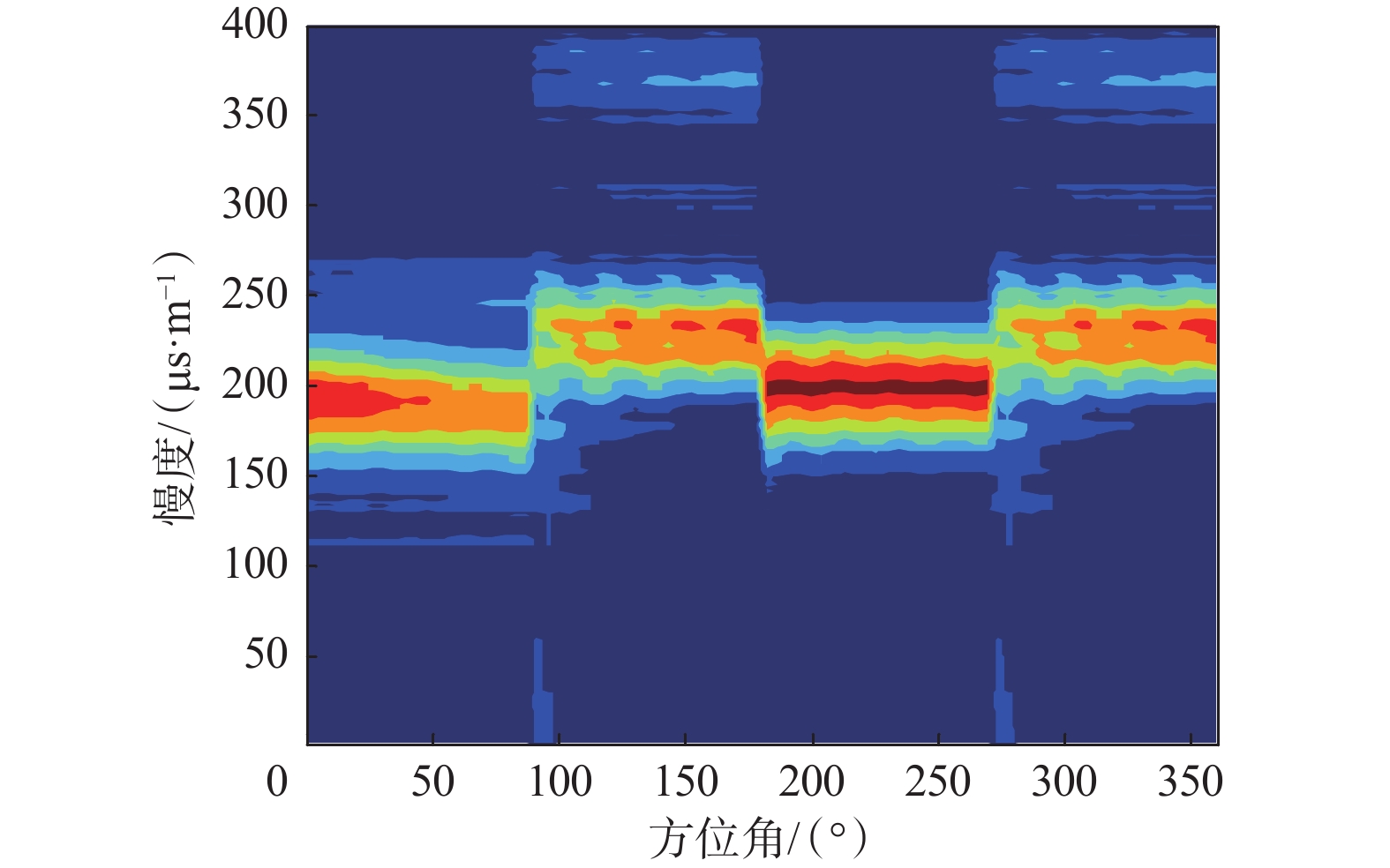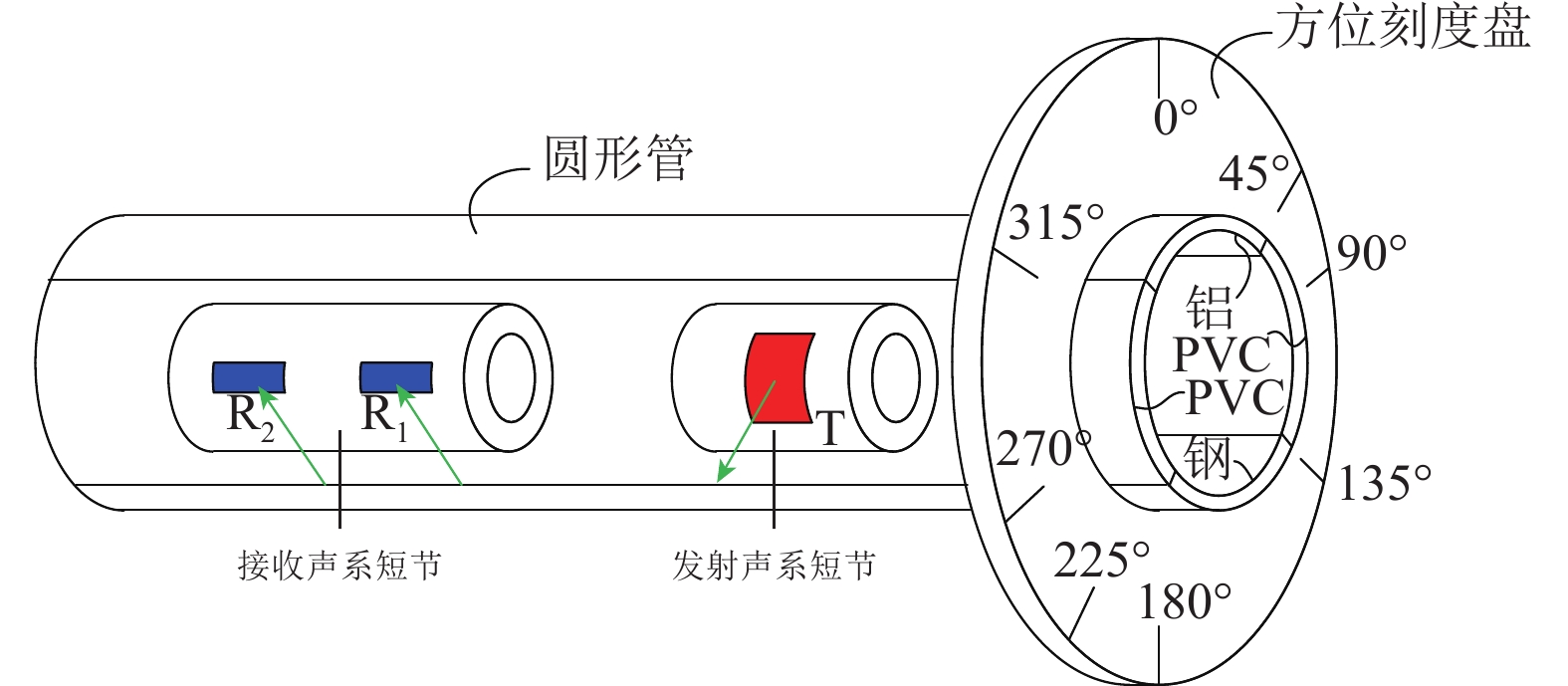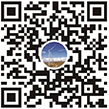Numerical Simulation and Test of Velocity Imaging for Remote Detection Acoustic Logging While Drilling
-
摘要:
为了获取井周地层方位声波速度信息,评价地层的非均匀性,设计了不同方向速度模型井,研究了随钻声波远探测的方位声波速度测量性能。不同方向速度模型井包含4个扇区,相邻扇区纵波速度和横波速度均不同。数值模拟了该模型井的声波传播,采用偏极子发射和偏极子接收的测量模式,获得了方位角为0°,90°,180°和270°时的阵列接收波形,从接收波形提取到了井周地层方位声波速度信息,识别到了方位分区的变化。根据不同方向速度模型井的参数设计了试验装置,使用瓦片状方位声源准确测量到2个扇区高速介质的声波速度,识别出2个扇区低速介质的声波速度变化趋势,试验结果与数值模拟结果基本一致。研究结果表明,利用不同方向速度模型井可以对不同方向的声波速度进行评价,为随钻声波远探测进行地质导向和地层各向异性分析提供理论依据。
Abstract:In order to obtain azimuthal acoustic velocity information of formations around wells and evaluate the heterogeneity of the formations, a well model with different velocities in different directions was designed, and the performance of remote detection acoustic logging while drilling (LWD) in measuring azimuthal acoustic velocity was studied. The well model had four sectors, and the velocities of compressional and shear waves in adjacent sectors were different. In addition, acoustic wave propagation of the well model was numerically simulated, and an eccentric transmitter and an eccentric receiver were adopted for measurement. As a result, waveforms recorded by array receivers were obtained with their azimuth angle of 0°, 90°, 180°, and 270°, respectively. Furthermore, azimuthal acoustic velocity information of formations around wells was extracted from the waveforms, and changes in sectors with different azimuths were identified. According to the parameters of the well model with different velocities in different directions, a test device was designed. The tile-like azimuthal acoustic source was used to accurately measure the acoustic velocity of high-speed media in two sectors, and the acoustic velocity variation trend of low-speed media in the other two sectors was identified. The test results were in agreement with the simulation results. The research showed that it is feasible to evaluate acoustic velocity in different directions by the well model with different velocities in different directions, which provides a theoretical basis for geosteering and formation anisotropy analysis by remote detection acoustic LWD.
-
-
表 1 模型井声学参数
Table 1 Acoustic parameters of well model
介质类型 纵波速度/
(m·s−1)横波速度/
(m·s−1)密度/
(kg·m−3)内半径/
mm外半径/
mm水 1 500 0 1 000 0 108 铝质钻铤 6 300 3 100 2 700 28 86 A扇区 6 300 3 100 2 700 108 118 B扇区 2 600 1 300 1 400 108 118 C扇区 5 800 3 100 7 800 108 118 D扇区 2 600 1 300 1 400 108 118 水 1 500 0 1 000 118 500 表 2 声波速度测量数据
Table 2 Acoustic velocity measured data
序号 方位角/
(°)声波速度/(m·s−1) 测量偏差,
%数值模拟 试验测量 1 0 5 263.1 5 000 4.99 2 90 4 347.8 4 000 7.99 3 180 5 000.0 5 000 0 4 270 4 347.8 4 000 7.99 -
[1] MARKET J, DEADY R. Azimuthal sonic measurements: new methods in theory and practice[R]. SPWLA-2008-G, 2008.
[2] MICKAEL M, BARNETT C, DIAB M. Azimuthally focused LWD sonic logging for shear wave anisotropy measurement and borehole imaging[R]. SPE 160133, 2012.
[3] 杨锦舟, 肖红兵, 黄敬, 等. 随钻方位声波测井装置: CN201220537460.4[P]. 2013−05−08. YANG Jinzhou, XIAO Hongbing, HUANG Jing, et al. Azimuthal acoustic LWD device: CN201220537460.4[P]. 2013−05−08.
[4] 底青云, 张文秀, 陈文轩, 等. 一种随钻方位声波测井装置及测量方法: CN201810990687.6[P]. 2019−05−10. DI Qingyun, ZHANG Wenxiu, CHEN Wenxuan, et al. A azimuthal acoustic LWD device and method: CN201810990687.6[P]. 2019−05−10.
[5] PITCHER J, MARKET J, HINZ D. Geosteering with sonic in conventional and unconventional reservoirs[R]. SPE 146732, 2011.
[6] WANG T, DAWBER M, BOONEN P. Theory of unipole acoustic logging tools and their relevance to dipole and quadrupole tools for slow formations[R]. SPE 145515, 2011.
[7] 乔文孝, 车小花, 鞠晓东, 等. 随钻地层界面声波扫描测量装置和方法: CN200910235603.9[P]. 2012−12−12. QIAO Wenxiao, CHE Xiaohua, JU Xiaodong, et al. Measurement device and method for acoustic scanning formation layer while drilling: CN200910235603.9[P]. 2012−12−12.
[8] 卫建清,何晓,李希强,等. 含偏心点声源的随钻测井声场模拟和地层各向异性反演研究[J]. 地球物理学报,2019,62(4):1554–1564. WEI Jianqing, HE Xiao, LI Xiqiang, et al. Simulation of acoustic LWD with an eccentric source and inversion of formation anisotropy[J]. Chinese Journal of Geophysics, 2019, 62(4): 1554–1564.
[9] 张正鹏,刘玉凯,苏远大,等. 考虑压电声源-井孔系统的随钻方位声波测井数值模拟[J]. 测井技术,2020,44(1):1–7. ZHANG Zhengpeng, LIU Yukai, SU Yuanda, et al. Numerical simulation of azimuthal acoustic LWD under a piezoelectric source-wellbore system[J]. Well Logging Technology, 2020, 44(1): 1–7.
[10] 孙志峰,仇傲,金亚,等. 随钻多极子声波测井仪接收声系的优化设计与试验[J]. 石油钻探技术,2022,50(4):114–120. SUN Zhifeng, QIU Ao, JIN Ya, et al. Optimal design and experimental study of the receiver sonde in multipole acoustic LWD tools[J]. Petroleum Drilling Techniques, 2022, 50(4): 114–120.
[11] 刘西恩,孙志峰,仇傲,等. 随钻四极子声波测井仪的设计及试验[J]. 石油钻探技术,2022,50(3):125–131. LIU Xien, SUN Zhifeng, QIU Ao, et al. Design and experiment for a quadrupole acoustic LWD tool[J]. Petroleum Drilling Techniques, 2022, 50(3): 125–131.
[12] 盛达,于洋,祁晓. 随钻四极子声波测井仪在油田勘探开发中的应用[J]. 测井技术,2021,45(6):573–579. SHENG Da, YU Yang, QI Xiao. Application of quadrupole array sonic tool in oilfield exploration and development[J]. Well Logging Technology, 2021, 45(6): 573–579.
[13] 朱祖扬. 随钻单极子声波测井模式优化及远探测[J]. 应用声学,2022,41(2):310–317. ZHU Zuyang. The logging mode optimization and remote detection performance of monopole acoustic logging while drilling[J]. Journal of Applied Acoustics, 2022, 41(2): 310–317.
[14] 杨玉峰. 随钻声波测井时域有限差分模拟与钻铤波传播特性研究[D]. 哈尔滨: 哈尔滨工业大学, 2014. YANG Yufeng. Studies on the finite-difference time-domain simulation of acoustic logging while drilling and the propagation characteristics of the collar wave[D]. Harbin: Harbin Institute of Technology, 2014.
[15] 马海,李铮阳,肖红兵. 随钻声波测井仪模拟实验装置研制及应用[J]. 内蒙古石油化工,2019,45(7):1–5. MA Hai, LI Zhengyang, XIAO Hongbing. Development and application of simulation experimental device for acoustic logging while drilling[J]. Inner Mongolia Petrochemical Industry, 2019, 45(7): 1–5.
-
期刊类型引用(3)
1. 尹宜勇,朱文佳,曲从锋,王岩,王立琰,龚振,崔明轩,王国强. 用于油气井RFID扶正器激活的阅读器共形天线设计. 中国石油大学学报(自然科学版). 2024(01): 150-158 .  百度学术
百度学术
2. 张利巍,孙露凯,范立华. 无线射频压裂滑套系统模拟试验研究. 石油机械. 2024(04): 27-32 .  百度学术
百度学术
3. 李翠,周瑞涛,王晓辉,邢军. 改进的单尺度Retinex算法在管道焊缝图像中的应用. 电子测试. 2021(15): 63-65 .  百度学术
百度学术
其他类型引用(3)




 下载:
下载:











